Is it safe to ride a motorcycle after an accident?
If you’ve been in a crash and are physically okay, your first thought will probably be regarding the health of your bike. Here’s how to make sure it’s safe to ride

REGARDLESS of the type of crash you’ve had, the chances are there will be some form of damage to your pride and joy. Just jumping up off the floor, dusting yourself off and riding your bike is highly unadvisable – checking your machine over thoroughly is very much advised!

Am I still insured to ride after a crash?
There is a chance that your insurance policy will include some wording on the certificate called an endorsement. One very common endorsement relates to riding the motorcycle under its own power after an accident. The thinking behind it is that they don’t want you hightailing off into the sunset before an engineer or mechanic has deemed the bike safe to ride. Some insurers will also stipulate that the bike needs to be MoT’d after the crash for the cover to be valid. The best advice is to check your documents and get it recovered, that’s what fully comp insurance is for after all.
Will I get to assess the damage myself?
If the bike’s been involved in a severe accident, chances are a low-loader will be used to collect the bike. Then, it’ll be taken to a dealer or insurance repair centre for a full estimate. If you’ve been lucky and swerved any serious damage, it’s a good idea to try and assess the damage yourself.
What should I do before I start checking for damage?
Before you start to assess any damage, it’s a good idea to give the machine a clean, especially if it’s gone down on grass or mud. Any extra muck on the bike could be hiding some damage. Now try and think about how it was caused, the sort of speeds involved and where and how did the main impact occur?
Work from the front wheel to the back wheel, one side of the bike at a time. Make a note of any part, however small, that shows any signs of damage or fatigue. Once you find a damaged part, check what it carries or is attached to, this will be the next piece of the puzzle to fail.
Now you’ve given the bike a superficial once over, get it on a paddock stand or and grab a long straight edge like a piece of angle-iron or some solid timber and lay it along the floor flat against the outer edge of the front wheel. Get down and look along the edge as it sits against the front wheel while it’s pointing straight ahead. By looking down either side of the bike from the lowest point on the front wheel will help you check if the front end is as it should be.
If the handlebars are in line and the front wheel is pointing slightly left or right simply turn the bars to the opposite lock and push the wheel against the stop with your foot. This will twist the tubes in the legs and should put them back in line. Look for damage to the fork bottoms. Even the slightest cosmetic scuff could put a potential buyer off. Remember, people will always think the worst; some may see minor scuffs as a sign the bike has been involved in a high-speed smash.
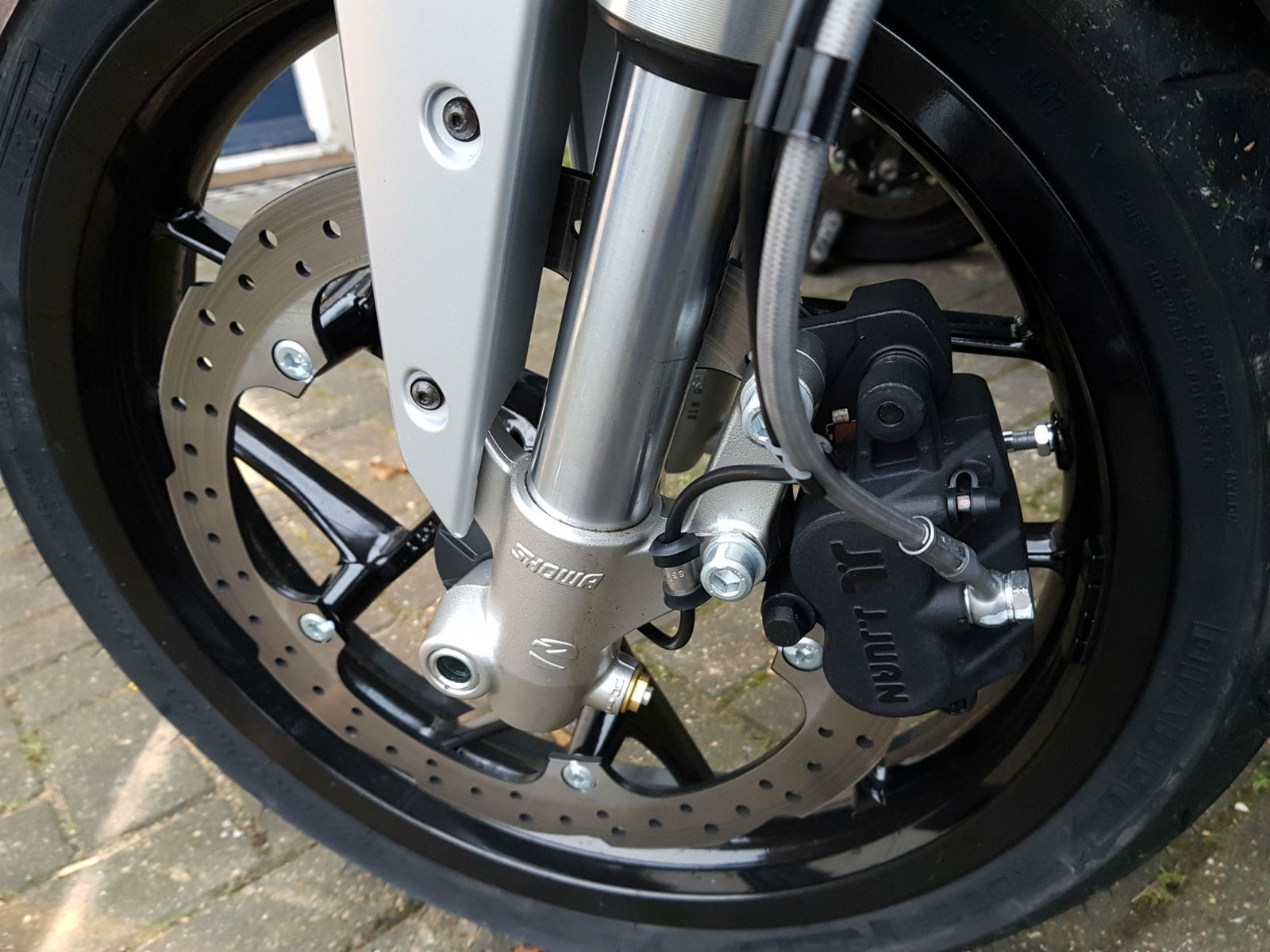
Don't break your brakes!
Check the underside of the front brake calipers. If there are signs of damage or impact it's important to make sure the retaining pins aren’t bent. You can't replace just the sliding pin, instead a new caliper will be needed. Rotate the front wheel and check for buckles or run-out to the rim and the discs. There are companies out there that can repair cast alloy wheels, but when it comes to brake discs it’s best not to risk it and go for a replacement set if there is any sign of warping or damage. Grab a matched set or even better, the OEM items. It’ll cost more but a fussy buyer who wan;t it all original will thank you for it – financially!
Take a close look at the headstock to check for damage to the lock-stops. These tend to be quite soft and are easily damaged. Bear in mind specialist alloy welders will be able to rebuild the stops once the front end has been stripped. If your bike has a painted steel frame look for areas where paint has cracked or flaked off, especially around welds and on the headstock. This is a sign that the frame is bent.
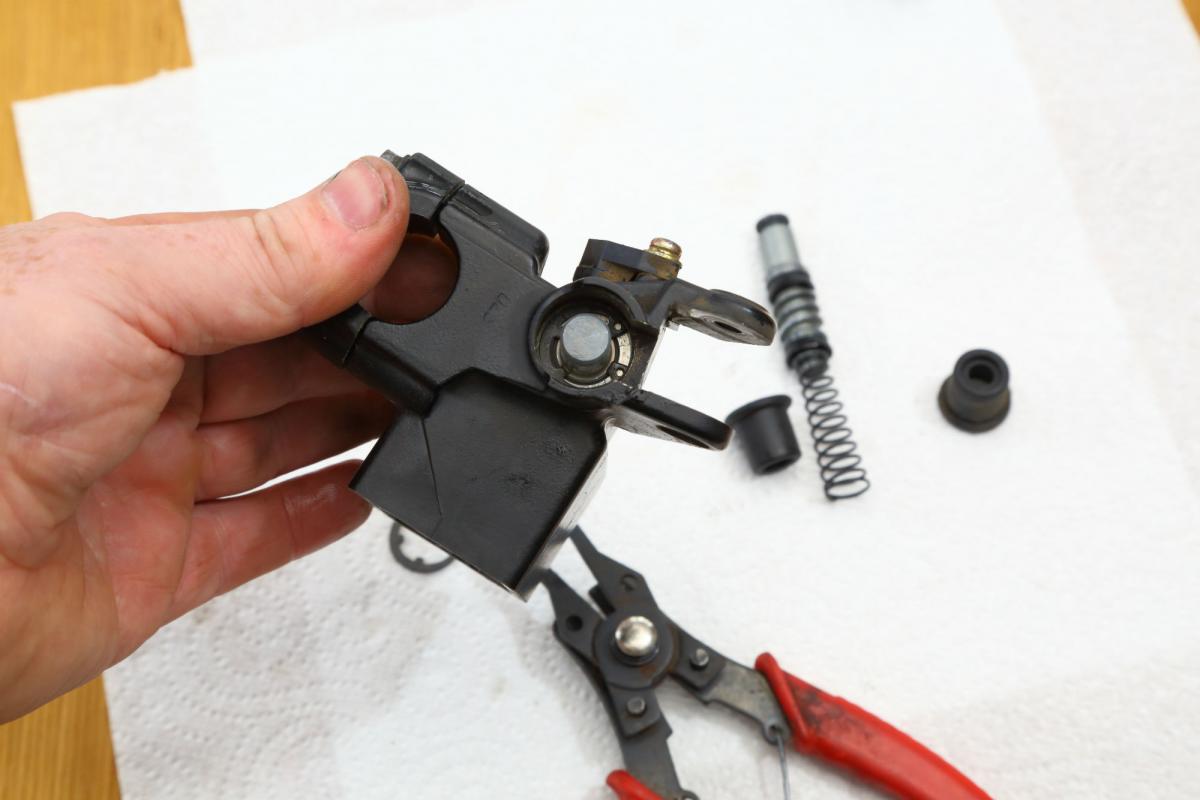
Levers are one of the first things to go
Most front brake and clutch levers have a weak point in the design. It's a small groove through the lever about a third of the way from the end. Usually, if a bike goes down the lever will break at that point leaving enough lever to continue riding, although a lever with its end missing would fail an MoT so will need replacing. Bent levers will also have to be replaced as there is no chance of straightening them without snapping, even if a little bit of heat is used. The material will never have the same strength as before.
Check the handlebars for alignment by moving from lock to lock and measuring the distance from the end of the bars to a fixed point on the bike, assuming the lock-stops aren't damaged of course! Don't waste time trying to straighten them - there's no chance of them ever being perfectly straight again. Have a look for where the bar-end weights may have turned into the bike. On early FireBlades it was common for the end weight to ding the frame even if the bike fell over at a standstill. The ding can be repaired by building the damaged area up with weld and polishing it out, but prospective buyers, particularly dealers, will be suspicious of a polished frame and will be less likely to offer sensible money for your second-hand bike.
Check the throttle for free movement. If the bike has gone over on its right side the bar end weight may be forced into the throttle tube. There's also a locating pin on the inside of the switch housing which stops the switchgear from turning with the throttle; this can snap off and is hard to repair.
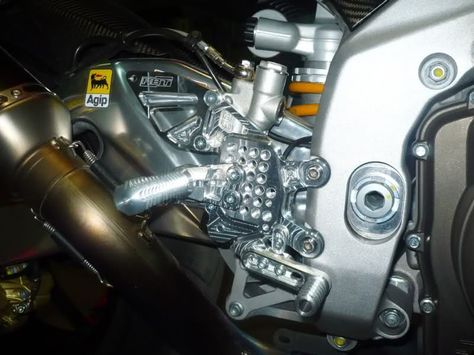
Damaged footrests and footrest hangers are easy to spot by taking a look at both sides from above the bike. It will be almost impossible to straighten alloy footrests or hangers without them snapping. Have a look behind the footrest assembly for damage caused by the footrest being pushed into the frame or swingarm, especially if the bike has been ridden since the accident. With the front end in line take a look at the bike from the rear to check the subframe is true. Soft alloy subframes are easily twisted or bent and are difficult to straighten.
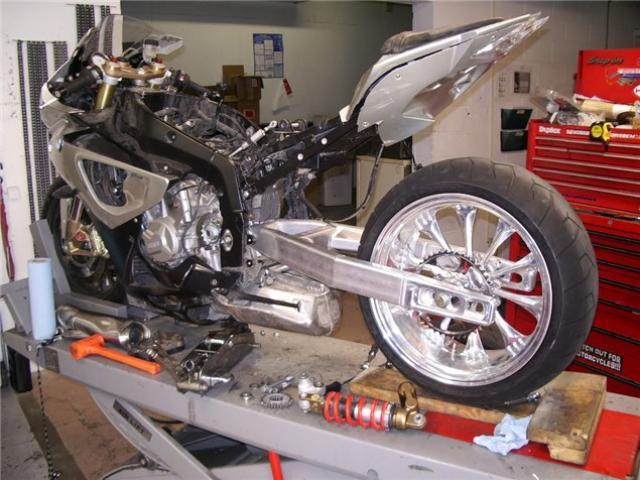
Get naked!
Finally, remove as many panels as possible and check for cracks and broken lugs. Most panels can be repaired and repainted, although a number of manufacturers fit many small panels rather than one big one these days to keep the cost of repairs down, so it's worth checking the prices of both painted and replacement panels. With all the panels off, check for damage to fairing brackets, including the main support at the front. It's very hard to straighten these. Run the bike to check for oil or water leaks. A hairline crack in an engine casing or radiator may not be apparent until the engine warms up. If you need to replace an engine cover make sure you order the necessary gaskets. Radiators can be repaired, but in most cases will need replacing.
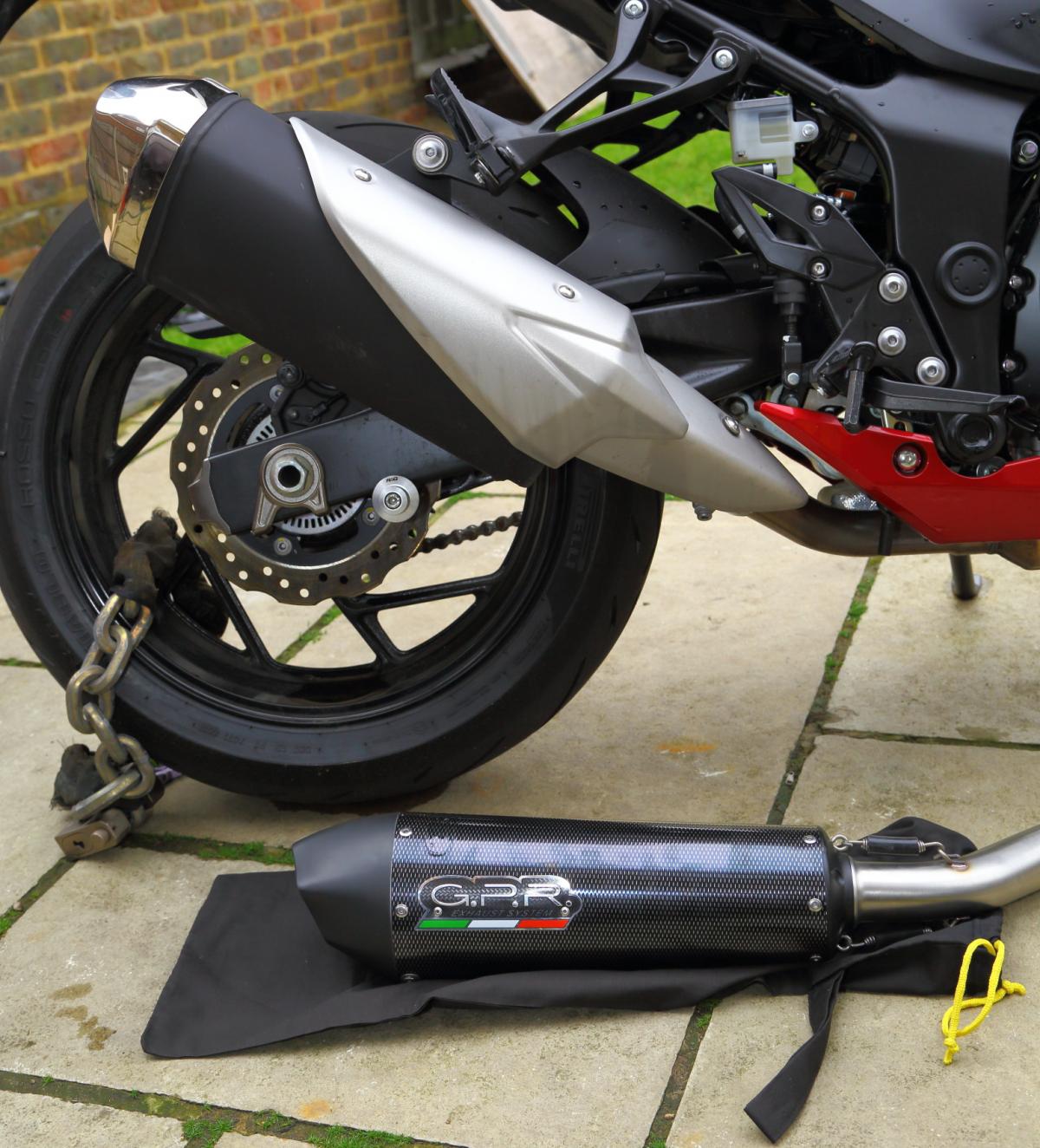
On most bikes one of the first parts to go down will be the silencer. Genuine silencers are very expensive but remember that the closer to standard your bike is the more desirable it will be and the better it will hold its value.
Once you have noted every damaged part you will need to call your dealer or drop a list of parts in for pricing. They will be able to price it up using genuine and pattern parts, where available. Make enquiries with specialist repairers to have paintwork or welding work carried out. Once it's all priced up you can decide whether you want to carry out repairs yourself or, if the total bill is escalating, you may want to consider putting in an insurance claim.
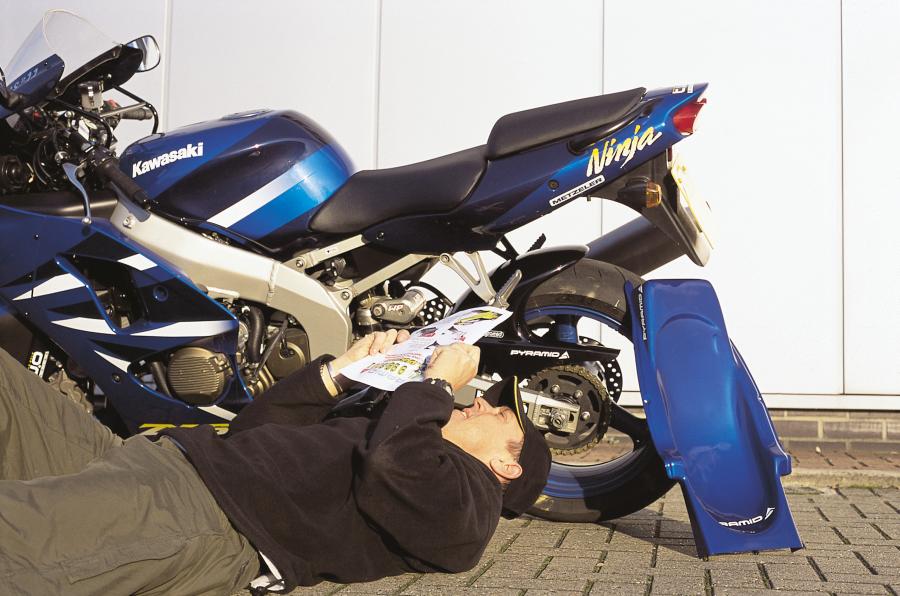
10 Steps to check your bike's health after a crash
- 1. Use a Vernier gauge - to measure disc and rim runout. A small amount of runout - 4mm for wheels - should be ok, more isn't
- 2. Check lockstops for damage. If the front end has received an impact from either side, these could be cracked or even broken off. Alloy welders may be able to fix them
- 3. Inspect calipers for signs of impact. Sliding pin calipers like these may be irreparably damaged. Check opposed piston calipers for damage to their mountings
- 4. Turn the bars onto the right lock and measure the distance from the bar end to the tank, then turn to left lock and repeat. If the measurements are different, something's out
- 5. If the right-hand bar end has been down, make sure it isn't affecting throttle action. Now's the time to get those purple anodised items you've been lusting after. Every cloud etc...
- 6. It's stuff like this you might not notice at first glance. Many pattern parts are available, including mirrors, handlebars and levers, and can save cash over genuine items
- 7. If the footrests have taken an impact (which they usually do) make sure the hangers aren't pushed back into the frame or swingarm where they can score deep gouges
- 8. Big bendy indicators are actually pretty good at absorbing energy in low-speed or no-speed falls. Replace with originals or decent pattern items, not shite dinky carbon rubbish
- 9. Wheel rims can be scratched or even bent in impacts with kerbs or the like. This, above, amounts to no more than cosmetic damage. It could have been worse
- 10. Here's a knackered radiator. Small holes in the core can be fixed, but crash damage like this is terminal. New ones cost a packet, too. Oh dear.
Sponsored By

Britain's No.1 Specialist Tools and Machinery Superstores
When it comes to buying tools and machinery, you need to know you're buying from specialists who know what they're talking about.
Machine Mart eat, sleep and breathe tools and machinery, and are constantly updating their range to give you the very best choice and value for money - all backed by expert advice from their friendly and knowledgeable staff. With superstores nationwide, a dedicated mail order department and a 24 hour website offering quality branded items at fiercely competitive prices, they should be your first choice for quality tools and equipment.
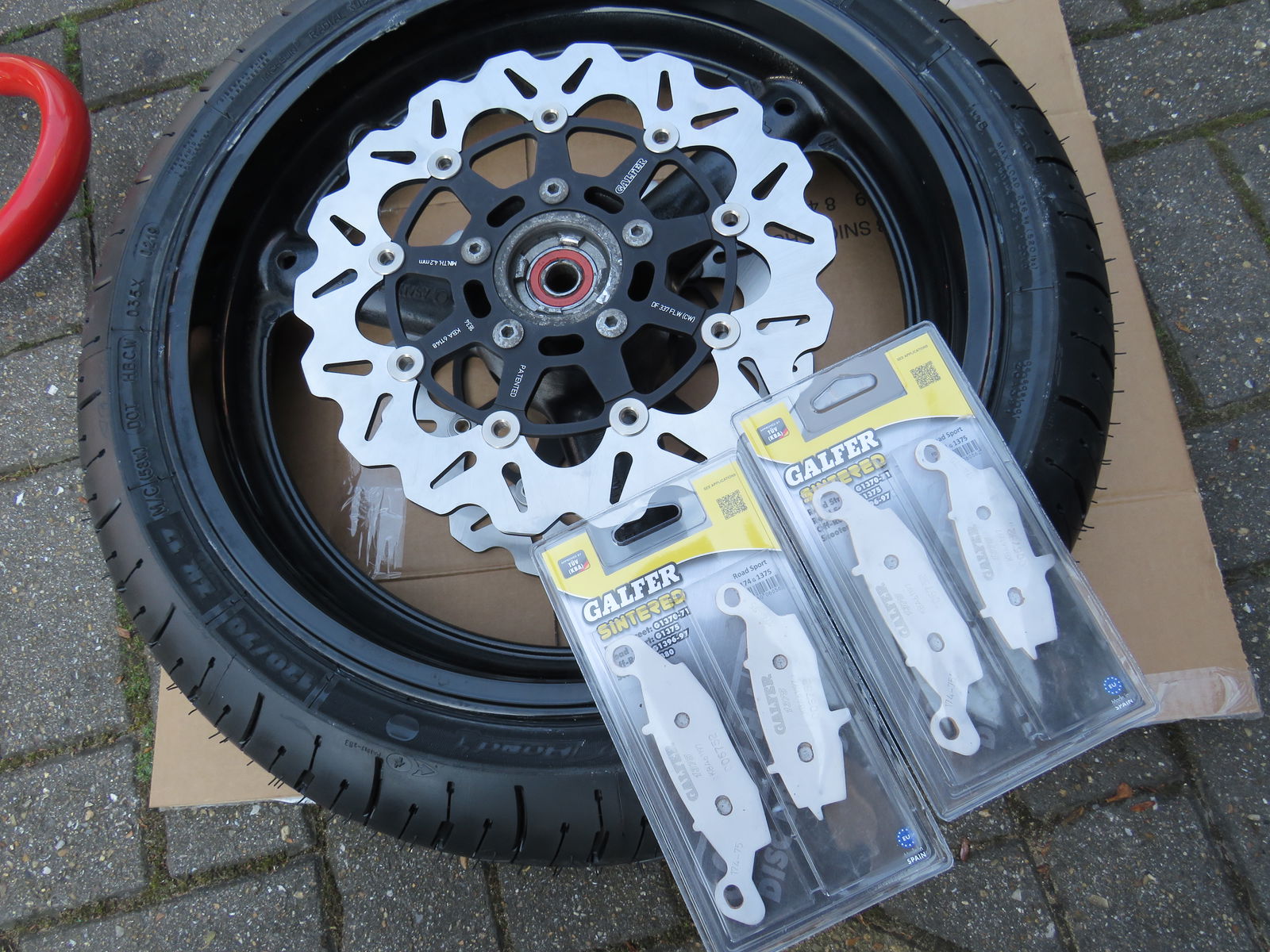
.jpg?width=1600)
